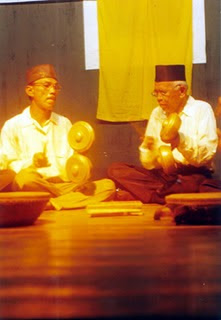Maestro Literature from West Sumatra
By Abel Tasman
 My Imagination is a monasteries and I am its monk. My imagination is a monastery and I was the friars. The phrase from John Keats that the figure quoted was in a very appropriate essay describes the creative process as a poet. That's just a Rush Marzuki Saria. He seemed destined to become a poet who puts the imagination as a very broad sphere for the birth of his poetry works.
My Imagination is a monasteries and I am its monk. My imagination is a monastery and I was the friars. The phrase from John Keats that the figure quoted was in a very appropriate essay describes the creative process as a poet. That's just a Rush Marzuki Saria. He seemed destined to become a poet who puts the imagination as a very broad sphere for the birth of his poetry works.
Rusli Marzuki Saria who familiarly called Papa is known as a poet-humanist whose work could not be released from the treasury of Indonesian literature in the last 50 years. His poems were published in various media that exist in Indonesia since the 1950s. He also often appeared in various stage poetry readings at berbabagai city in the homeland.





